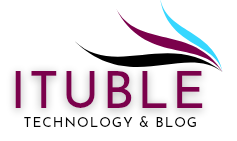Transforming Lives: Assistive Work Technology Assessment at Roosevelt Warm Springs
In today’s evolving world, technology is playing a powerful role in enabling individuals with disabilities to access work opportunities more efficiently. One standout example of this progress is the assistive work technology assessment at Roosevelt Warm Springs. This pioneering initiative is helping people with physical, cognitive, and sensory challenges to discover the tools they need to succeed in the workplace.
The Importance of Assistive Work Technology
Assistive technology is no longer a luxury—it is a vital component of accessibility and workplace integration. For individuals who face barriers to employment due to disability, the right tools can be life-changing.
Tailored to Unique Needs
Everyone’s abilities and limitations are different. That’s why the approach at Roosevelt Warm Springs is not a one-size-fits-all model. Each assessment focuses on identifying technology that complements a person’s strengths and overcomes specific challenges.
Roosevelt Warm Springs: A Historical Leader in Rehabilitation
Located in Georgia, Roosevelt Warm Springs has long been associated with cutting-edge rehabilitation programs. Founded by President Franklin D. Roosevelt in the 1920s, this center continues to uphold his vision of empowering individuals through training, therapy, and opportunity.
A Hub for Innovation
The assistive work technology assessment at Roosevelt Warm Springs builds upon this legacy. The facility has embraced modern digital tools, from screen readers and voice-to-text software to customized ergonomic equipment, all designed to prepare individuals for real-world employment.
How the Assessment Process Works
The assessment is a structured process that includes both evaluation and hands-on experience. It’s guided by professionals who understand both assistive technology and occupational challenges.
Step-by-Step Evaluation
Participants undergo an initial review of their current abilities and limitations. Occupational therapists and assistive tech specialists work collaboratively to explore what tasks need support. Then, they introduce various technology tools and observe how the individual interacts with them in simulated work scenarios.
Types of Technology in Use
There is a wide range of technology solutions utilized in the program, depending on the type of support required. These tools help address physical, sensory, or cognitive barriers in the workplace.
Physical Aids
Individuals with limited mobility might benefit from modified keyboards, joystick-controlled mice, or even speech-controlled computers. Adjustable desks and ergonomic seating are also used during the assistive work technology assessment at Roosevelt Warm Springs to ensure physical comfort and functionality.
Cognitive and Sensory Tools
People with learning disabilities or sensory processing challenges can explore text-to-speech apps, memory aids, and even virtual reality programs that simulate workplace environments for training.
Real-World Success and Impact
The greatest testament to this program’s effectiveness is the real-life success of its participants. Many individuals who complete the assessment go on to obtain meaningful employment, thanks to the insight and training they received.
Empowerment Through Employment
Work provides not just income but a sense of purpose and independence. The assistive work technology assessment at Roosevelt Warm Springs empowers individuals by giving them the tools to navigate the modern workplace confidently. It promotes inclusivity and helps businesses diversify their workforce.
FAQ
Who is eligible for the assistive work technology assessment?
Generally, individuals with a documented disability who are seeking to enter or re-enter the workforce are eligible. Eligibility is usually coordinated through state vocational rehabilitation services.
Is the technology provided free of cost?
The assessment is often covered by vocational rehabilitation programs. However, actual device procurement may depend on funding availability and individual circumstances.
What types of jobs can participants prepare for?
The program supports preparation for various types of jobs, including administrative work, customer service, IT, retail, and more, depending on the participant’s abilities and interests.
How long does the assessment take?
Most assessments are completed over a few days, but this can vary based on individual needs and the complexity of the required technology.
Is ongoing support provided after the assessment?
Yes, many participants receive follow-up support, including training and troubleshooting help as they transition into the workplace.
Conclusion
The assistive work technology assessment at Roosevelt Warm Springs is much more than a service—it’s a life-changing experience. By identifying and integrating the right tools, it removes barriers that once seemed insurmountable. It not only gives individuals with disabilities the ability to work but also the confidence to thrive.
Through individualized evaluations, access to cutting-edge technology, and compassionate support, Roosevelt Warm Springs continues its legacy of empowerment and innovation. As technology evolves, programs like this one will remain crucial in building inclusive workplaces where everyone has the opportunity to succeed.







